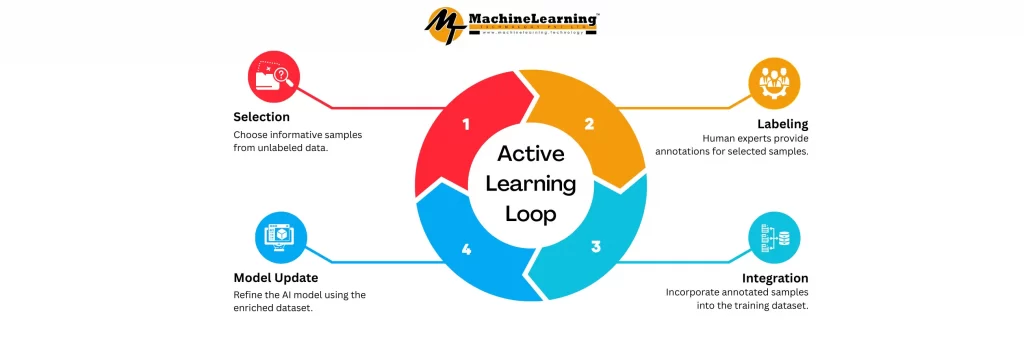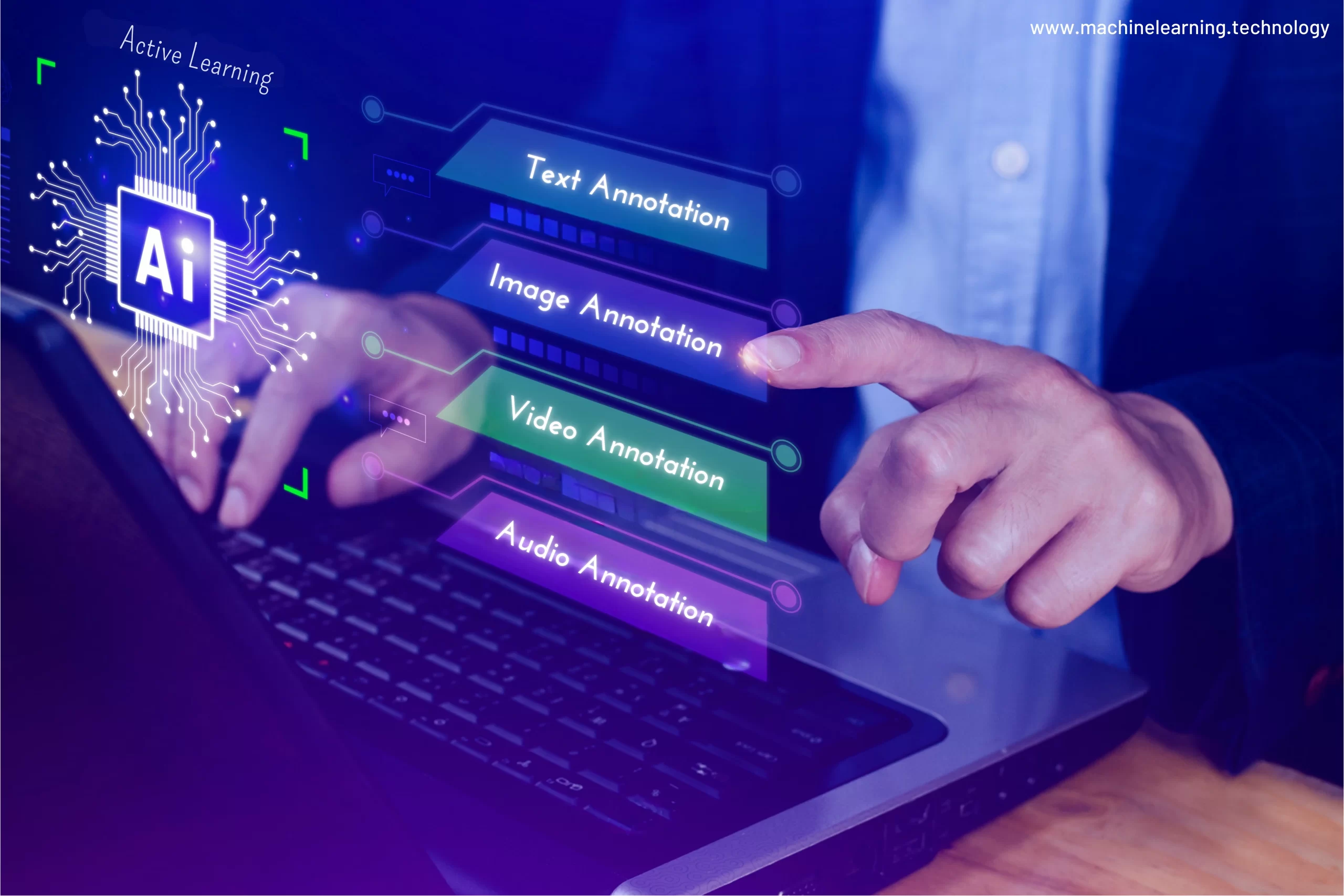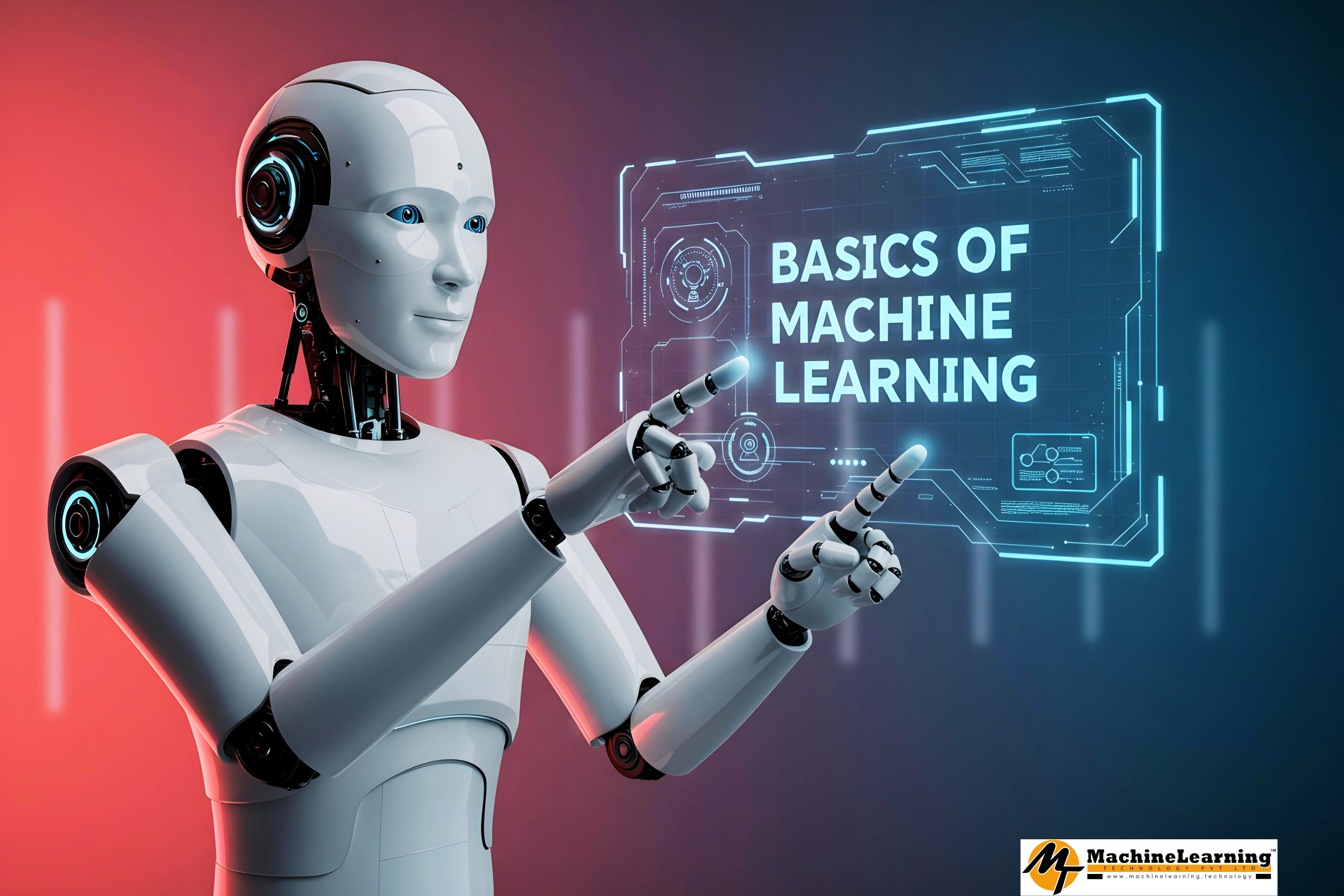Artificial Intelligence (AI) is making major changes in the world today. Its impressive capabilities all hinge on one factor—high-quality labeled data. Although these methods involve tedious and costly work, Active Learning provides a simple yet revolutionary tactic to efficiently train AI models using fewer labeled data.
Unlike traditional techniques, which randomly assign labels to data, AL enables users to concentrate on assigning data to the portions of information that offer the highest value during labeling. This approach not only saves a lot of time and money but also increases AI model accuracy. Throughout this blog, we will look deeper into the logic behind AL, its significance, and its prospects.
What is Active Learning?
Consider Active Learning as a more productive method of teaching artificial intelligence. Instead of pouring all available data into the AI, we allow the AI to pick the most problematic examples for human professionals to decipher. The AI focuses on problematic scenarios, which results in increased and improved Learning.
This approach is particularly beneficial for labeling-intensive and costly industries like – medicine, autonomous driving, chatbot development, and scientific research. Instead of reviewing every piece of data, It focuses on the data that requires attention.
Understanding Active Learning: A Detailed Guide
Active Learning is a unique approach to machine learning. It is characterized by a repeating loop of learning, developing, and retraining an AI model. Here’s an outline of the method.
- AI Model Starting Point Training: The process begins with the crucial task of constructing an initial AI model. This model is then trained using a limited set of labeled data. This stage is paramount as it lays the foundation for the AI’s understanding of performing a specific task. Once the AI is trained on this primary dataset, it can make basic predictions or decisions.
- Data points that the model is uncertain about are identified: After the initial model is trained, it is used on a much larger set of unlabeled data. The AI, in this case, is actively sifting through the data to identify all the data points where it is uncertain about its predictions. These areas of uncertainty, where the AI is less confident about its predictions, are the most important as they are the boundaries of the model’s understanding and can provide a wealth of knowledge.
- Human Assistance in Labeling: Active learning takes a different approach by strategically labeling as little data as possible. In this method, the AI identifies the most complex cases and presents them to a human worker who is an annotator. These request systems optimize human effort by focusing it on valuable tasks, ensuring humans address only the most complex problems requiring AI assistance. This saves resources and significantly improves the learning experience, as the focus is on value rather than the volume of work done, highlighting the crucial role of human annotators in the AI development process.
- Updating The Model: After reviewing the labels provided by the human annotators, the AI takes that information and uses it to reset the bearing as it goes through a retraining phase. This stage is critical because it enables the AI to refine its algorithms by reviewing newly labeled data, and testing its boundaries. The model learns from the intricacies and inaccuracies of prior assumptions, leading to more precise future decisions.
- Continuous Evolution: The process of training the model, identifying areas of concern, creating annotations, and retraining is not a one-time event. It is a continuous cycle that the AI system must go through multiple times. This constant evolution pushes the AI system to improve its capabilities constantly, leading to more accurate predictions and better performance. This cycle continues until a specific accuracy level is reached or performance indicators are achieved, highlighting the dynamic nature of AI development.
Importance of AL
AL is unique in that it aids in decision-making with a low quantity of labeled data available, and the data is costly to procure. It is efficient because the limited resources for labeled data are concentrated on the most informative parts of the data. Not only does the time for training the model reduce, but it also results in higher accuracy, as the model, owing to its continuous learning nature, adapts and learns from the most relevant and challenging examples.
How to Use AL Effectively
To increase efficiency, utilize the following guidelines.

- Sample Selection: Optimization of Informative Samples Extracting Informative samples from unmarked data increases effectiveness in training and accuracy of the model while spending fewer resources on uninformative data.
- Human Labeling: Implementation of Human Labeling Experts blends heuristics with automated labeling to ensure, which is critical for AI systems, that every label is accurate, thus improving accuracy and reducing errors from automated labeling.
- Sample Integration: Annotated Sample Addition Integration of expert-annotated samples increases the complexity of model learning with known recent trends and ensures that the model is not stagnant with past data.
- Data Change: Regularly updating the model with rich data enhances its performance and prediction accuracy by capturing unexpected changes observed over time.
How Active Learning Is Disruptive Innovation
- Cost Effective: Reduces the burden of providing millions of labeled examples, significantly reducing the time and money needed, and making it far more cost-effective than traditional AI training.
- Enhances AI Precision: From the above information, it is clear that Active Learning focuses on the most challenging cases, leading to increased efficiency and, therefore, greater accuracy with less data.
- Increases AI Training Speed: When a model is trained and labeled with Active Learning, the focus is on high-value labeled data. This leads to improvements in the model increasing at a far greater rate than traditional AI methods.
- Decreases Bias In AI: AI models trained with randomly labeled datasets can be biased. Active Learning, for example, reduces this bias by ensuring various challenging exemplars.
- Optimizes Human Work: Humans do not need to work hard—they need to work smart. Human annotators prepare more meaningful data, maximizing their effort by avoiding time spent on straightforward and repetitive examples.
Real-World Applications of Active Learning
- Medical Imaging: Doctors and radiologists often upload medical scans to assist their AI models. Active Learning focuses labeling efforts on only the most challenging or ambiguous scans, reducing workload and enhancing AI diagnostic capabilities.
- Self-Driving Cars: Control of Truly Autonomous Vehicles relies on vast amounts of labeled data describing the state of the roads, and that’s the best solution considering the problems of Active Learning. It ensures the safety of self-driving AI by labeling only the most demanding driving scenarios.
- Chatbots and Natural Language Processing (NLP): Chatbots and other language-oriented models work with labeled data and thus require labeled text data. Active Learning proves to be most effective when based on poorly defined phrases and sentences. It will enhance AI’s capability of comprehending human speech.
- Fraud Detection in Banking: AI assists financial institutions in detecting fraud, and Active Learning enhances this capability. Active Learning simplifies human scrutiny of suspicious transactions by pinpointing potential fraud more accurately.
- Manufacturing and Defect Detection: Manufacturers analyze the AI-detected product defect, and Active Learning enables a better approach to quality management by using AI defect recognition with Active Learning enabled where the AI is unsure and a mid-borderline defect case is present.
- Scientific Research and Climate Modeling: Experts employ AI technologies to evaluate climate science and healthcare big data. Active Learning minimizes labeling work by emphasizing data-driven points and enhancing predictive models.
Challenges of Active Learning
Active Learning has its advantages, but it presents some issues:
- Selecting an Appropriate Query Strategy: Different methods of choosing uncertain samples exist, including uncertainty sampling, diversity sampling, and committee selection. Picking the best one is not always easy.
- Reliance on Domain Specific Professionals: Some fields (for instance, surgery) need a labeling specialist for the data, which can create bottlenecks in the labeling step.
- Expense Related to Processing Power: Active Learning requires constant model retraining, which is resource-expensive due to the need for advanced computing power.
- Careless Choice of Active Learning Data Sets: Without restrictions, Active Learning will likely ignore too much of some other data, leading to invalid AI outputs.
The Future of Active Learning in AI
As AI progresses, Active Learning will incorporate new features that will assist in training models faster, smarter, and at a lower cost. Below are some trends to keep an eye on:
- AI-Assisted Labeling: AI models will increasingly assist in labeling data, diminishing the need for human labor.
- Self-Supervised Learning: AI will gain knowledge from both labeled and unlabeled data types, making Active Learning smoother.
- Cloud-Based Active Learning: Businesses will use the cloud for computing resources to implement Active Learning on massive datasets.
- Real-Time Active Learning: AI models will autonomously and actively use production requests for labels, thereby improving themselves in real time.
Across industries, Active Learning is transforming the future of AI by improving and making intelligent AI training more efficient.
Conclusion
Active Learning is revolutionizing how we gather quality training data while showing us that AI is only as good as the data from which it extracts knowledge. This approach collects valuable data points, directly reducing costs, improving learning speed, and enhancing AI precision.
AL is no longer optional, especially for companies and researchers trying to build advanced AI systems. The future of AI requires a new paradigm for data annotation and provides exactly that.



